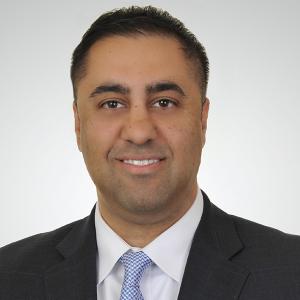How to Protect Your Single Family Office From Cybercrime

- While single family offices (SFOs) may assume they’re too small to attract criminals, their combination of high-value data and potentially weak defenses makes them ripe targets.
- Today’s cybercriminals, often powered by artificial intelligence, can attack on multiple fronts, including impersonating SFO staff or family members.
- SFOs can build strong defenses through straightforward steps to reduce their digital exposure, protect key accounts, segment smart home devices, and train staff and family members to spot and report threats.
Cyber threats are growing more pervasive, and single family offices (SFOs) are not immune. In fact, the very work that makes them essential to wealthy families — managing complex financial affairs — also makes them appealing targets for cyber criminals.
More than one in four single family offices have already experienced a cyberattack — most within the past year. Roughly half of SFO leaders recently surveyed acknowledged that they feel unprepared for future attacks. Many said they had underestimated the seriousness of the risks, often pointing to a lack of knowledge as a key barrier to stronger defenses.
In this article, we outline key cyber risks facing SFOs and offer actionable steps to help protect your staff, family, and legacy.
Understanding Today’s Cyber Landscape for Family Offices
An SFO’s small, tight-knit staff and focus on just one family can create a false sense of security. Unlike multifamily offices (MFOs), which often have larger teams that include dedicated information security professionals, SFOs tend to operate with leaner teams that may prioritize convenience over security. And because a single family owns and controls the office, there may also be overlap between personal and professional devices and accounts, creating additional vulnerabilities.
At the same time, cybercriminals have become more advanced and harder to detect in their methods. Tactics range from phishing emails and social engineering to impersonation of staff or family members and attacks via compromised vendors. Criminals tailor campaigns using dark web data and breached credentials. Their adoption of artificial intelligence for deepfake audio, AI-generated phishing, intelligent malware, and other scams often evolves faster than most defenses can adapt.
Further compounding the risk, many SFOs lack comprehensive inventory of their digital footprint — devices, vendors, accounts, and exposure — which creates blind spots for attackers to exploit.
While no system can offer absolute protection, a strong, layered defense can deter bad actors, making them more likely to move on to easier targets.
Shrink the Attack Surface: Reduce Your Digital Exposure
Criminals build their attack profiles using public or breached information. The less data they can find, the harder it is to target you. Consider these steps:
- Remove data from brokers. Data brokers collect personal, financial, and behavioral information — often without your direct interaction or consent — and sell it to other organizations. To help protect your privacy, consider using services that automate the removal of this information.
- Delete dormant accounts. Unused accounts — especially those tied to shared email addresses — are prime targets. Delete what you no longer use.
- Monitor for breaches. Regularly check if family emails and passwords appear in known breaches. These findings can help you rotate credentials and close gaps. One effective (and free) tool is Have I Been Pwned, which notifies you if your email appears in a breach. You can sign up for alerts at haveibeenpwned.com/NotifyMe.
- Practice password hygiene. Use a password manager to create and store unique passwords, and enable two-factor authentication (2FA) on all sensitive accounts.
- Limit public exposure. Review what family and staff share online. Minimize the public footprint of names, locations, schedules, and photos.
- Extend the perimeter. Household staff — nannies, personal assistants, house managers, and private chefs — should also be trained and supported.
Protect Key Accounts: Focus on What Matters Most
Not all accounts are equal. Start by securing the critical few that pose the greatest risk. You don’t need to secure everything overnight. Begin with the 20% of accounts that represent 80% of the risk — those tied to identity, money, and communication:
- Email. It’s often the launchpad for deeper attacks, such as phishing, wire fraud, or ransomware. Use strong, unique passwords and enable 2FA for all users.
- Financial and healthcare accounts. Lock these down with strong credentials, review login history, and set up transaction alerts to monitor activity.
- Social media. These accounts can be used for impersonation, fraud, or extortion. Use strict privacy settings and regularly check for fake or duplicate profiles.
- Devices. Ensure phones, tablets, and laptops are equipped with auto-updates, encryption, and remote wipe capabilities to secure data if a device is lost or stolen.
- Credential discipline. Remind users never to share login details — even among family or staff.
Protect the Home: Secure the New Perimeter
With remote work and smart homes, the family office security perimeter now extends into every residence — whether it belongs to staff members or family members. Lighting, HVAC, and security systems often run on outdated software and come with minimal safeguards.
Treat the home like a part of your network:
- Secure Wi-Fi. Change default names and passwords. Use separate guest networks and enable the latest encryption technology (WPA3).
- Isolate smart devices. Place smart home devices — such as locks, cameras, printers, and thermostats — on a separate network from sensitive devices. Keep firmware updated or replace insecure devices.
- Audit home automation systems. Require vendors to follow security best practices. Limit and rotate credentials for anyone with remote access.
- Control physical access. Secure access to local devices and backups, especially in homes with staff or frequent visitors.
- Conduct annual home cyber checkups. Take inventory of devices, review access logs, and reassess network segmentation and exposure at least once a year.
Protect Identity: Lock the Digital Door Behind You
Identity theft is personal — and its consequences can be long lasting. Limiting access and monitoring continually can help prevent it — and reduce the damage if it happens:
- Freeze credit. Apply credit freezes for every adult and eligible child in your household at Experian, Equifax, and TransUnion. You can limit freezes temporarily when needed.
- Set fraud alerts. These notify you when someone attempts to open a new line of credit. Also, check if any credit files exist for minors in the family; if so, lock them.
- Monitor more than credit. Use tools such as ChexSystems (banking) and National Consumer Telecom & Utilities Exchange (utilities) to detect unauthorized activity. Sign up for services such as Have I Been Pwned to monitor the dark web for exposed credentials as part of an early warning system and layered defense.
- Secure IRS identities. Enroll family members in the IRS Identity Protection PIN (IP PIN) program to block unauthorized tax filings.
Address the Human Factor: Strengthen Your Last Line of Defense
Even with robust technical defenses, human error remains the most common point of failure. People are your last — and often most important — line of defense.
- Ignore tech support scams. Train family and staff to disregard pop-ups or unsolicited tech support calls, and always verify independently before taking action.
- Limit social media oversharing. Reduce public sharing of personal information, which can increase impersonation risk. Encourage direct communication for anything urgent or unusual.
- Recognize phishing and malware. With roughly a third of all breaches caused by phishing, regularly train staff to recognize phishing attempts and extortion tactics.
- Guard against wire fraud. Use a formal, multi-step process to verify and approve all disbursement requests — especially those that are large, unusual, or time-sensitive.
- Establish a risk escalation path. Create a clear process for family and staff to pause, verify, and escalate concerns when something seems off.
- Consider expert support. Concierge cybersecurity services or trusted advisors can provide rapid response and guidance in the event of an attack.
Bessemer Trust and Information Security
With roots as a single family office dating back more than a century, Bessemer Trust has long been committed to helping families protect their wealth and privacy across generations. We offer a wide range of services tailored to support each family’s unique mission.
Our comprehensive information security strategy incorporates industry best practices, rigorous corporate policies, advanced technologies, and third-party expertise. We continuously monitor our systems and provide extensive training for our employees to safeguard client data.
We are committed to protecting your information and helping you strengthen your cyber defenses and stay ahead of evolving threats.
Conclusion
Family offices exist to protect wealth, privacy, and legacy across generations. But in today’s cyber threat landscape, legacy is no longer defined solely by financial discipline alone — it must include digital resilience. Yet the path to protection doesn’t require perfection. It requires prioritization, awareness, and a trusted system of defense.
Start with what matters most. Protect the core accounts. Secure the home. Guard your identity. Empower your people. And when necessary, bring in expert help.
Your family office doesn’t need to become a cybersecurity company — but it must be a vigilant steward of the family’s digital future.
Please contact your Bessemer advisor to learn more about keeping your SFO safe from cybercrime.
This material is for your general information. It does not take into account the particular investment objectives, financial situation, or needs of individual clients. This material is based upon information obtained from various sources that Bessemer Trust believes to be reliable, but Bessemer makes no representation or warranty with respect to the accuracy or completeness of such information. The views expressed herein do not constitute legal or tax advice; are current only as of the date indicated; and are subject to change without notice. Forecasts may not be realized due to a variety of factors, including changes in economic growth, corporate profitability, geopolitical conditions, and inflation. Bessemer Trust or its clients may have investments in the securities discussed herein, and this material does not constitute an investment recommendation by Bessemer Trust or an offering of such securities, and our view of these holdings may change at any time based on stock price movements, new research conclusions, or changes in risk preference.
